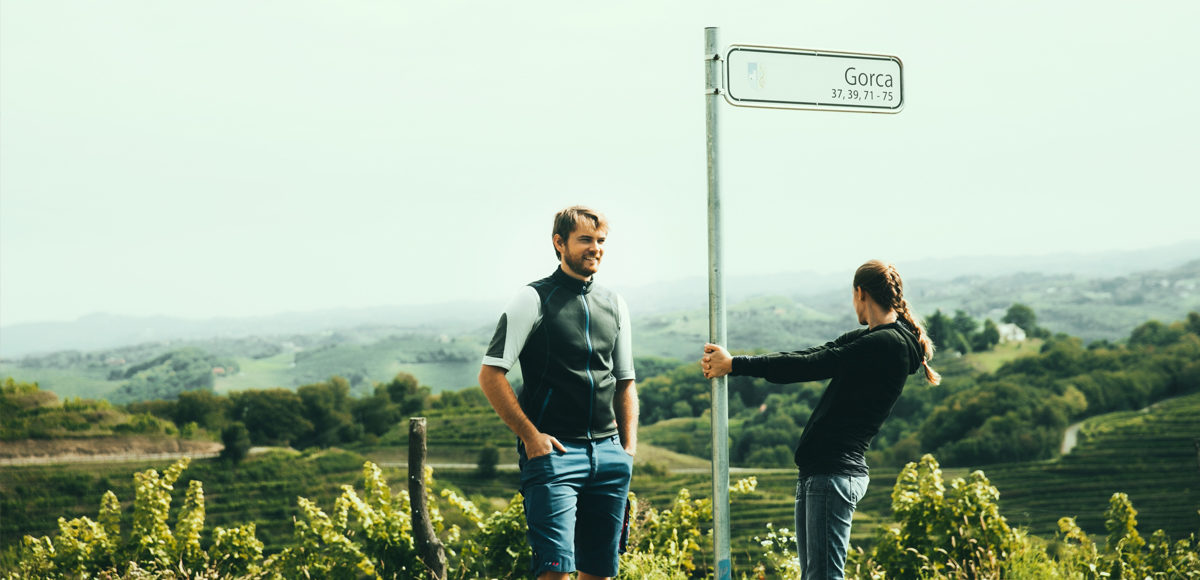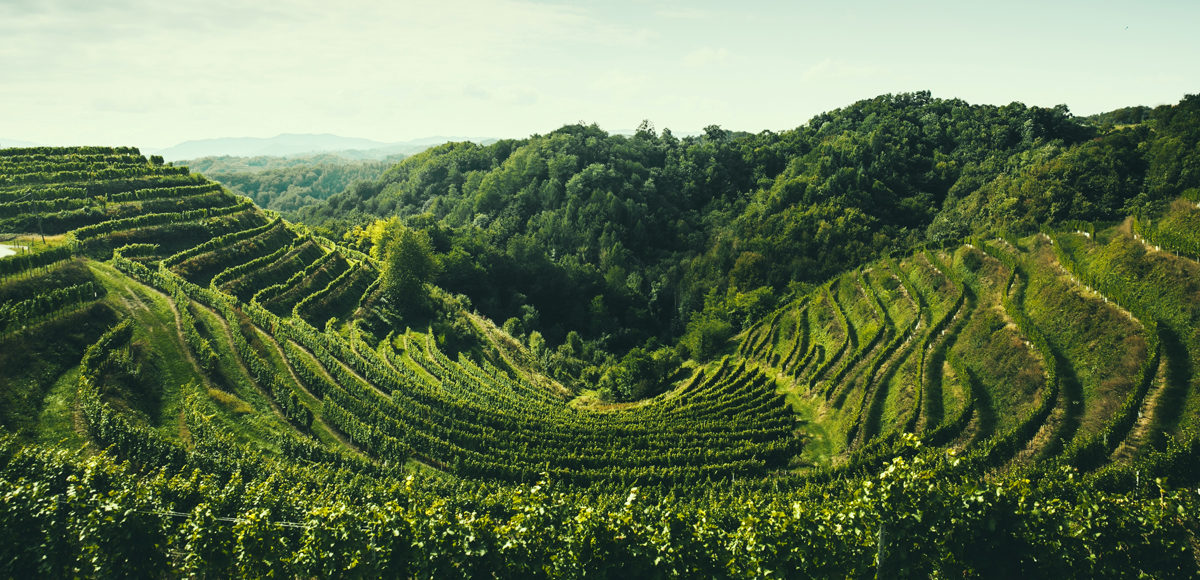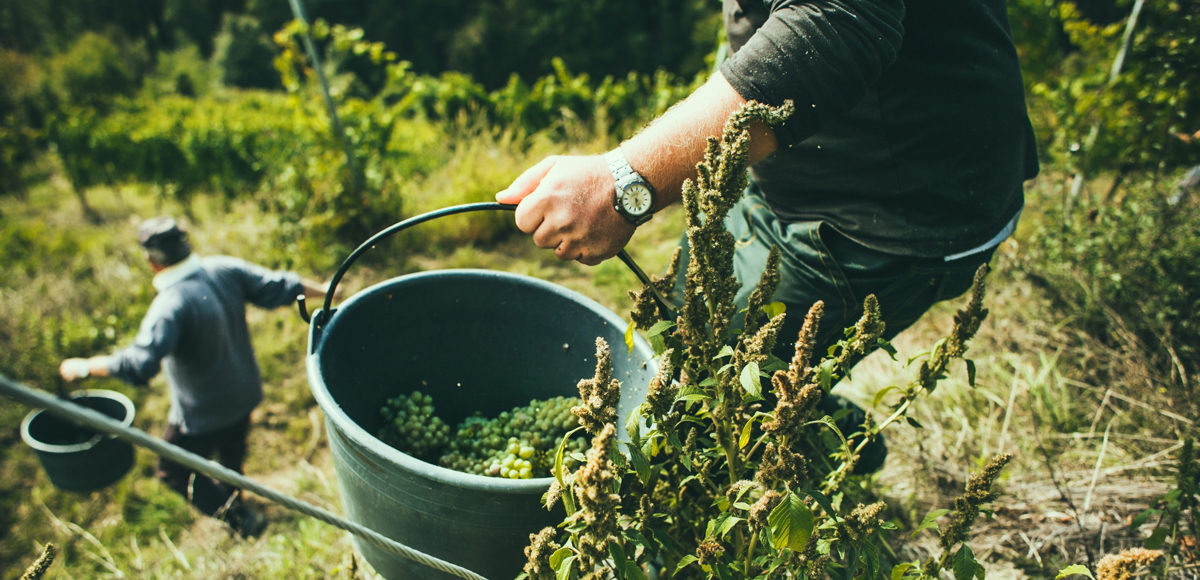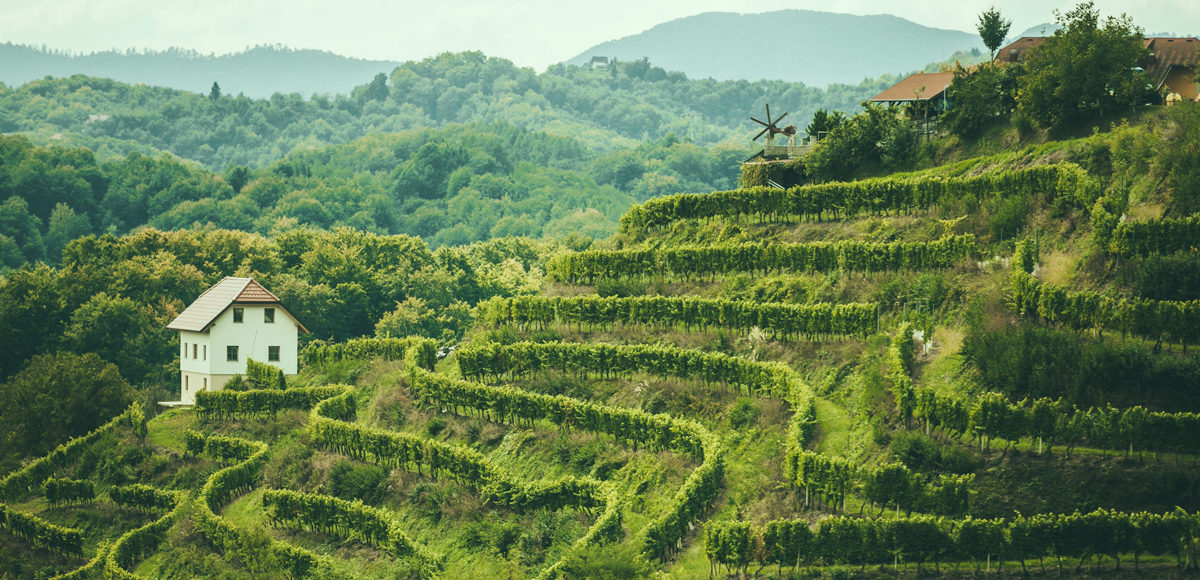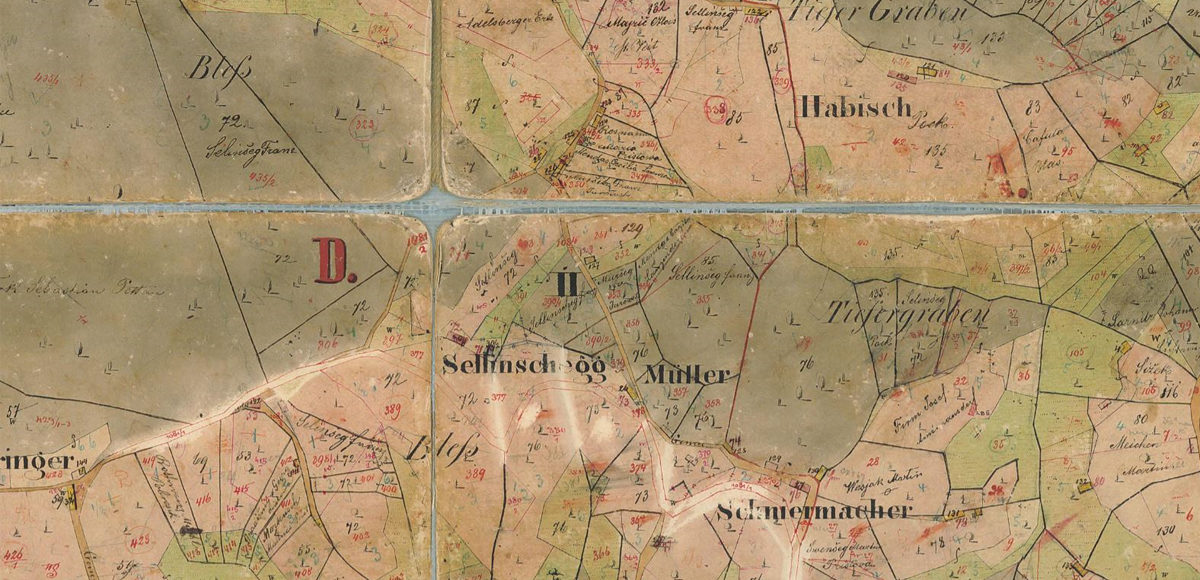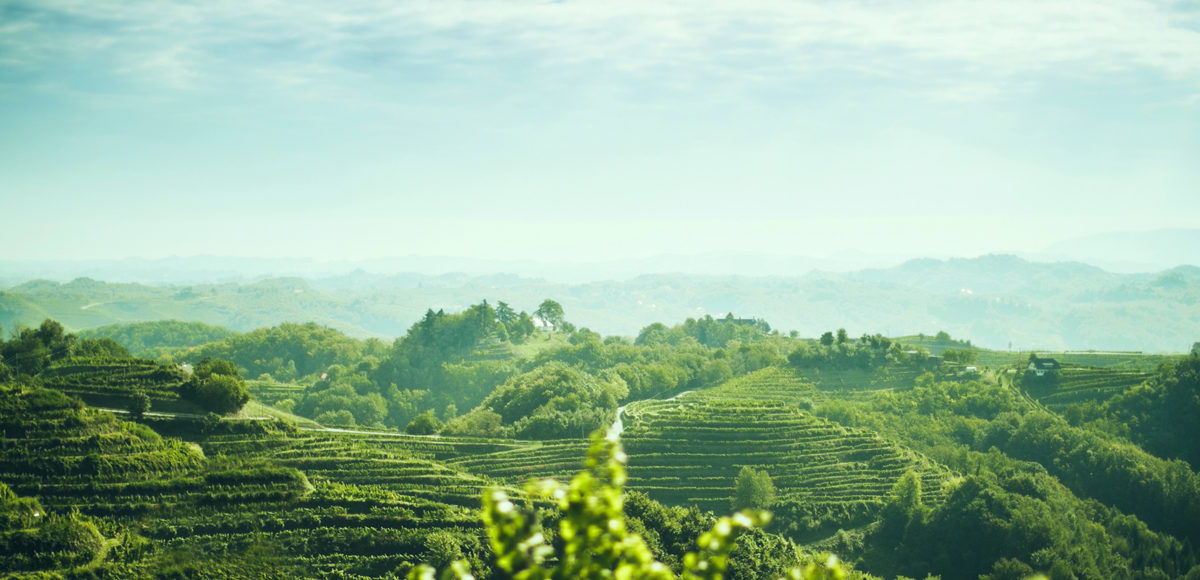“If you are lucky, you have great terroir. After ten years, I can tell you: we are very lucky.” — Michael Gross
Gross. Let’s get this out of the way right up front. In German, gross simply means big. In modern wine parlance, it means great or grand, as in Grosses Gewächs. In Austria and Slovenia, it is also the proud name of a family with more than a century of well-regarded winemaking history. Michael Gross is the fifth generation, entrusted with opening a new chapter in the family story across the border in Štajerska Slovenija (the region’s official name, which translates to Styrian Slovenia). In 2004, luck brought the Gross family prime vineyards in Gorca and Colles, some 60 km (40 miles) south of their home in Ratsch, Austria. They immediately recognized the property as a “sleeping beauty” awaiting the right touch to awaken its exceptional potential. With a climate, terrain, soils, and varieties that are similar to that of Ratsch, it was natural for Michael’s family to put down roots here. In 2011, Vino Gross was born. The family began restoring the vineyards, with a focus on white varieties traditional to the region, especially sauvignon blanc and furmint. As of 2019, Michael and his wife, Maria, have taken on full responsibility for the estate. “There were and are many role models in my life, but for me it’s important to find my own way,” Michael says. This is precisely what he and Maria are doing in Gorca and Colles — focusing on traditional varieties, farming organically, hand harvesting, working with spontaneous fermentations, malo, extended lees contact, and bottle aging. The wines are lively and, we might say, engrossing, introductions to a region in thrilling revival.
History
The Gross family traces its farming history to the mid-18th century, with an ancestor’s purchase of a mixed farm in Ratsch, Austria. In 1907, Heinrich Gross bought a vineyard in the Witscheiner Herrenberg (ironically, now Slovenia), though it would be decades before the family specialized in wine alone, eventually taking the name Weingut Gross. In the early 1980s, Alois Gross, Johannes’ and Michael’s father, trained his attention on improving wine quality at the estate and is widely regarded as a pioneer of quality winemaking in the region. The family was quite content with things as they were. But in 2004, Alois received a handwritten letter, offering him the purchase a small house and vineyard in the viticultural area of Gorca, Slovenia. The seller, an elderly woman in Vienna, wanted to ensure that her family’s property passed into good hands. Alois saw no need to expand and so, at first, did not respond to the letter. When a postcard arrived from the same sender a few weeks later, Alois agreed to go and have a look. On a little hill, at the end of the road, was a vintner’s house surrounded by vines. Enchanted, Alois resolved to spend more time there. Soon after, Johannes and Michael visited and saw its potential straight away. They purchased the estate and began their study of the existing terroir and its fruits, restoring and replanting the vineyards where necessary. In 2011, Vino Gross was born. Since then, the family has methodically added more sites, for a total of nine hectares today. Michael points out that “having vineyards on the other side of the border is not entirely new to our family. Our first vineyard from 1907, the Witscheiner Herrenberg, is located on what is today Slovenian ground.” As of 2019, Michael and his wife, Maria, have taken on full responsibility for the estate, with, in Michael’s words, “the mentality to make unique wines, which taste 100% of the origin of where they were grown.
Michael Gross
Michael grew up on the family estate in Ratsch, where his wine epiphany came at age 14 — “thanks to my parents, I had my first contacts to great wines of Burgundy, Bordeaux, Piedmont.” He left home to study at the University of Natural Resources and Life Sciences in Vienna, then to work at Knoll in the Wachau, as well as in Oregon, Croatia, and Bosnia-Herzegovina. Michael says of his inspirations: “There are so many I could mention. True and honest work — that is important to me.” Now Michael and Maria have that work: “We are responsible for everything,” he says with a smile. “More than 10 years ago, we were drawn to Gorca, to better understand the region, its people and their wines. Bit by bit, the inexpressible potential of this region opened itself to us. We gathered all our courage and founded Vino Gross, and have been working ever since to prove that wine of the highest quality can be made here. Being able to share the challenges with others is one of the best parts of a being a family business.”
Gorca / Štajerska Slovenija
Michael sees “no big difference” between wine growing in Slovenia and Austria. “The vineyards are just 60 km apart. Doesn’t matter in which place you are, if you want to make great terroir wines, you always have to get to know your soil, climate, and surroundings. This takes some time. If you are lucky, you have great terroir. After ten years, I can tell you: we are very lucky.”
Michael describes Gorca as “a wine-growing village right at the heart of the viticultural area of Štajerska Slovenija, surrounded by a dense mesh of hills with bowl-shaped, terraced vineyards to manage the steep terrain.” The vineyards, which are at about 300 meters (980 feet) above sea level, are folded around lower-elevation forests, in an unusual inversion. Gorca sits high in the Haloze hills, surrounded by stunningly lush, steep terrain. Vino Gross’s steepest site is a 65-degree slope — rivalling Franzen’s Bremmer Calmont for razor-edge grade.
As in southern Styria, the climate here is influenced by the contrast between the cooling effects of the Alps and warmth from the Adriatic. Gorca is markedly drier than Ratsch, getting about half the rainfall; the vineyard micro-climates are warmer, due to the bowl shape of the vineyards and the terraced slopes that collect and reradiate heat.
Aromatic white varieties, many introduced in the mid-19th century, have become traditional here, thriving on the climatic tension, calcareous clay soils, and steep slopes. Wines from Gorca were historically highly regarded. But the travails of the 20th century took their toll. Only in the past decade or so has this “sleeping beauty” slowly begun to waken to the sensitive touch of talented winemakers like Michael. “We have the once-in-a-lifetime chance to build up a region from the beginning. We also have the opportunity to learn from the good and bad developments of other regions,” Michael recognizes. “Viticulture on the steep and narrow terraces needs careful work, all by hand. That is the reason there is no possibility to make cheap wines in this region. We see this as an advantage for us.”
Vineyards and farming
“Our vineyards are in the Haloze region near the town of Ptuj,” Michael explains. “All the vineyards have nearly the same soil: the calcareous clay or marl called opok. The humus-bearing topsoil layer is rather thin, which is why the vines root deeply in the opok, in search of nutrients. This is reflected in the wines: lean, by no means opulent or fruit-forward, salty, and with a long finish.” Sauvignon blanc vines from the neighboring village of Colles are just 12 years old, but Michael says he is “amazed which structure these young vines already give to the wine.” The Gorca Furmint and Haloze Blanc come from parcels in which vine age ranges between 10 and 55 years.
Michael’s farming philosophy is clear: “No herbicides, insecticides, or chemical fertilizers. We just use compost. Harvest is 100% by hand. We harvest about 1 to 1.5 kg per vine for all varieties. We work each year a little bit different according to varieties and vintage in terms of crop, leaf, and soil management. The key word is balance. We want to have this in our wines, so we need it in our vineyards. We are looking for a perfect grape according to ripeness, without botrytis — just 100% healthy grapes.”
In the cellar
“I would call our winemaking philosophy controlled idleness,” Michael says winkingly. “Gentle pressing, natural fermentation in big oak (600-2,800 L), all wines kept on the full less for one year. If not needed, no batonnage! All our wines also go through malolactic. After racking, we lightly sulphur them and keep them for six to 12 more months in stainless steel. No filtering, no fining. Only Haloze Blanc is bottled after 12 months. We leave our wines a little bit more time (12 to 24 months) to develop in the cellar.” Michael believes strongly in the ageability of his wines, and holds back roughly 10% of each year’s production with the intention of proving his point.
